Door staining is not difficult with a little know how and the right tools. Not surprisingly the most important component is the stain. There are the big box store stains and the stains available from paint stores. Even among paint stores there are some that are garbage. I like Gemini stains and prefer to use them when possible. There are some others that are good as well. I’ve previously discussed the different types of stain and for theses doors, pictured below, I used a mineral spirit based wiping stain.
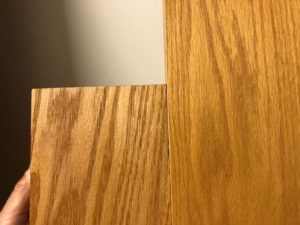
Besides the stain you will need a good area to work in with good ventilation. Sand paper or sanding sponges, gloves, rags, a few throw away brushes and I like to apply my stain with sheepskin scraps.
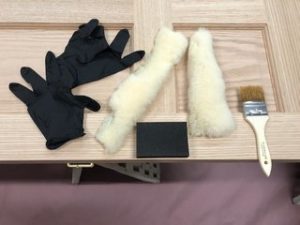
Once you have your work area picked out and the floor protected you will want to lightly sand the doors. I normally use about 120 grit paper. Then wipe them down with a clean rag.
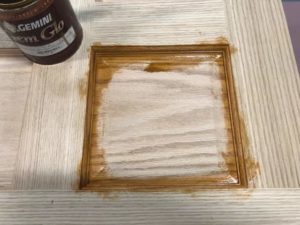
On raised panel doors I like to stain the panels first. This is a good area for the brush. To get the stain into all the seams around the trimmed out areas. I next stain the horizontal panels and then the vertical ones. These doors were made from oak so no pre-treatment or wood conditioner was necessary prior to staining. On softer woods or woods with open grain it is usually a good idea to precondition the wood to make the appearance uniform. I make my own wood conditioner and will discuss that in a future post. There are wood conditioners available for sale if you need one.
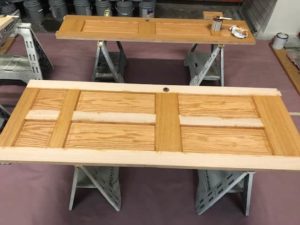
The appearance of the stain can be adjusted by many means. How long the stain is left on the wood prior to wiping, how it is applied, how much you sand, if you precondition the wood or not, etc. If you stain a door and discover it is not quite what you want, you can darken it by staining again or by “dry brushing” addition stain onto the surface.
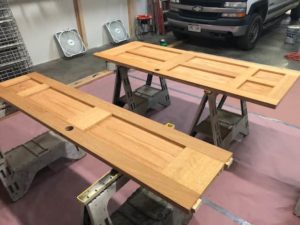
These doors were stained on saw horses. If you need to stain larger doors, a trick is to nail a piece of wood at the top of the door and lean it against a wall.


Because you can adjust the look by so many means I recommend first staining a piece of the same type of wood so you know what you need to do when ready for the door or doors.
Once the doors are stained you can lightly sand and seal/finish with your preferred finish. These doors got 3 coats of Pre-Catalyzed lacquer.

